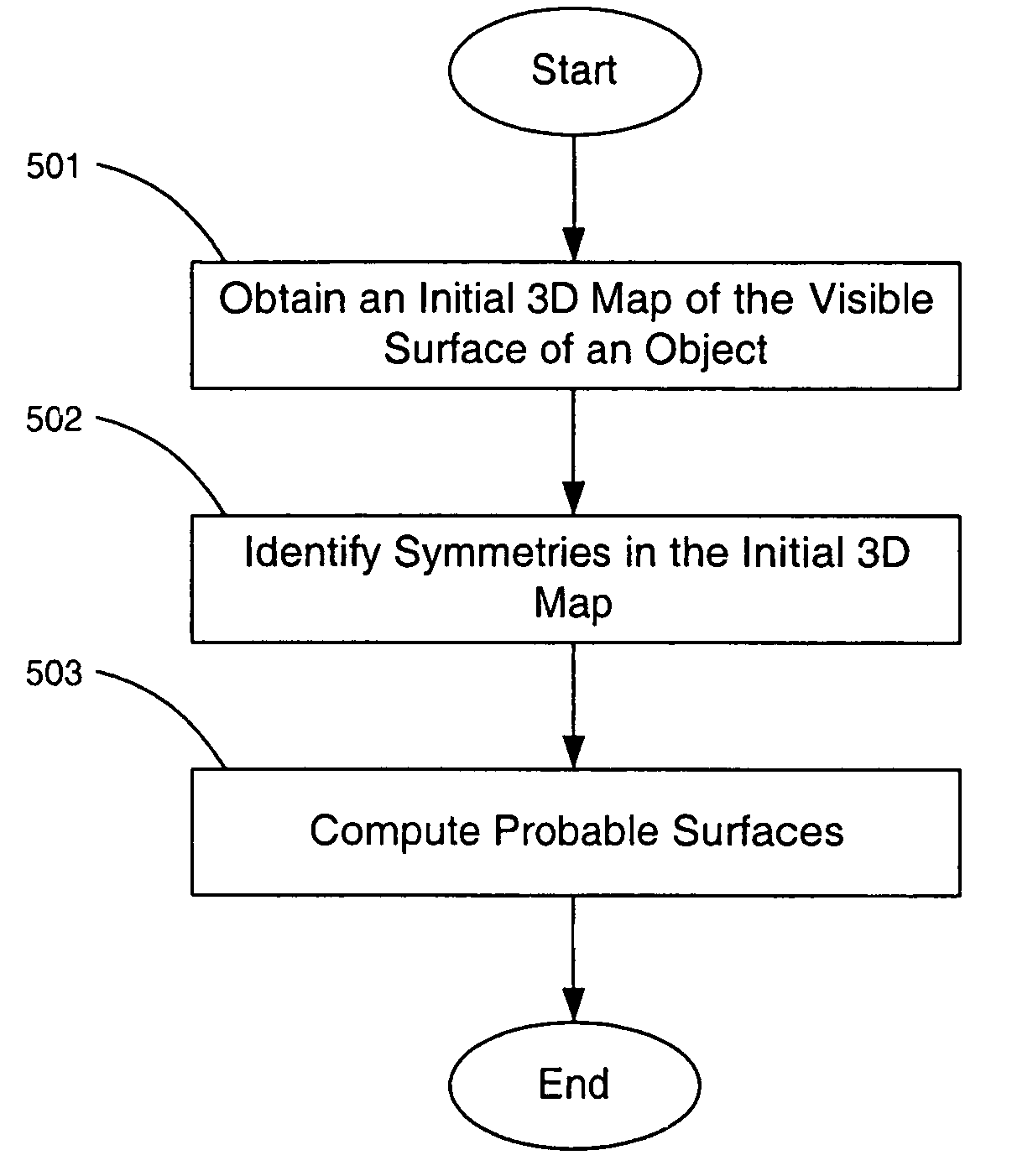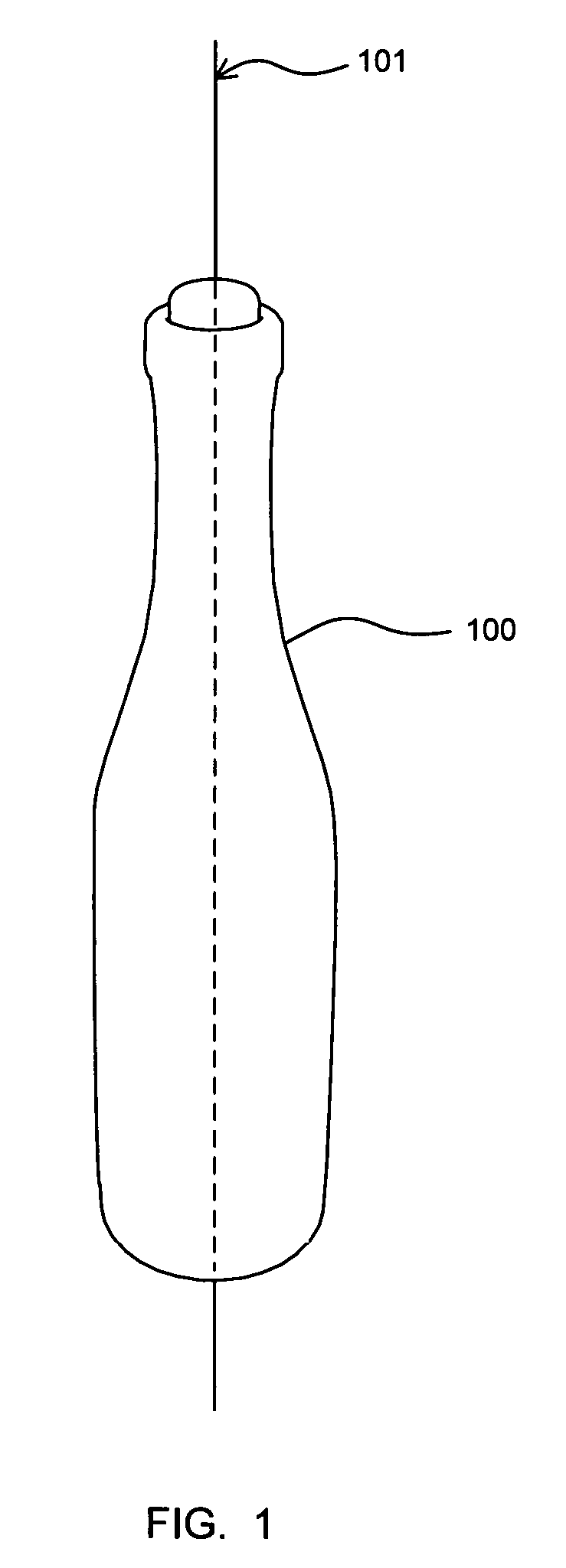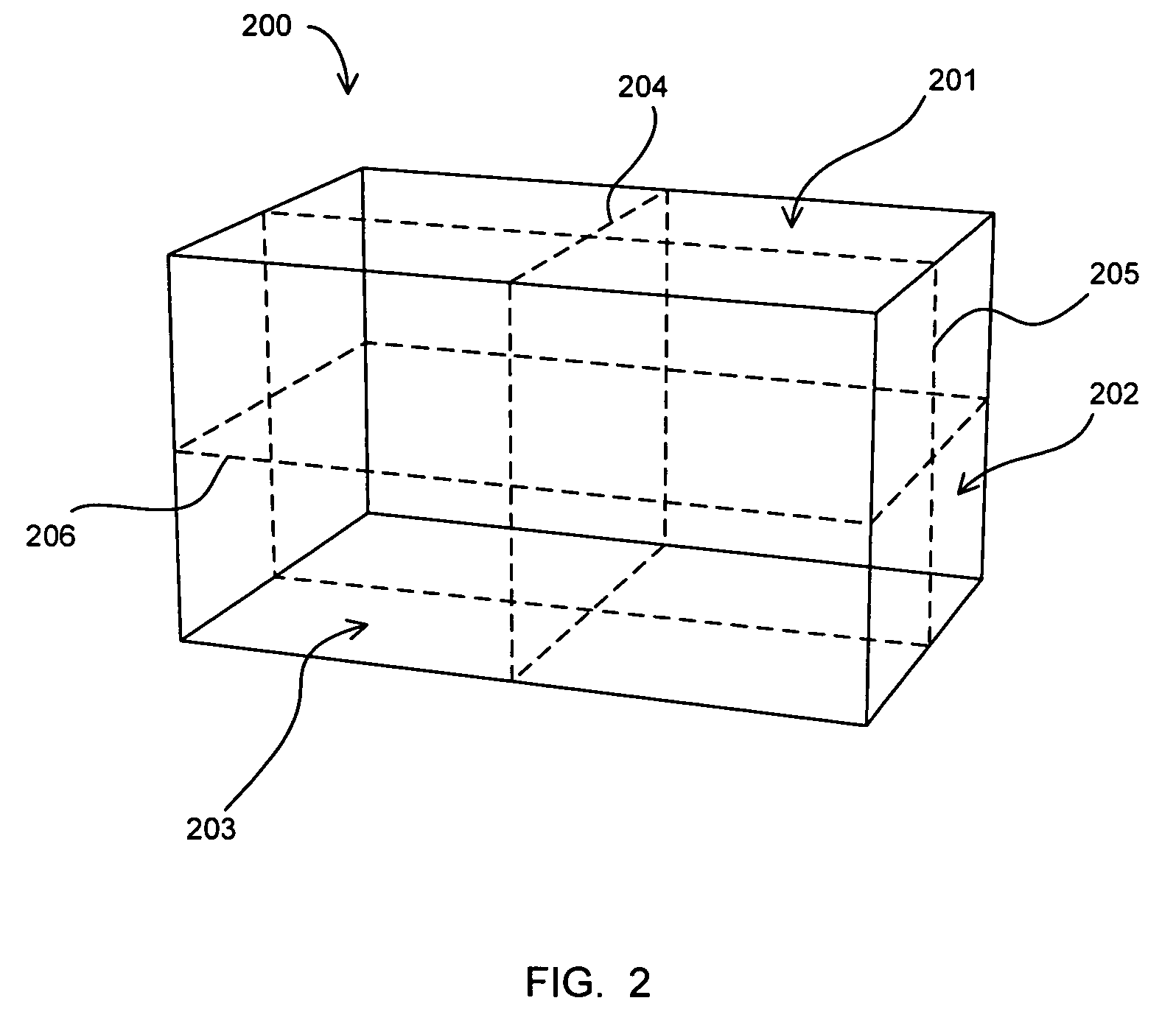Probable reconstruction of surfaces in occluded regions by computed symmetry
a technology of symmetry and probable reconstruction, applied in the field of machine perception, can solve the problems of not being able or economically to view objects, surfaces still remain occluded, and requiring some kind of opposition of surfaces
- Summary
- Abstract
- Description
- Claims
- Application Information
AI Technical Summary
Benefits of technology
Problems solved by technology
Method used
Image
Examples
Embodiment Construction
[0028]Briefly described, the invention is a system for computing probable 3D surfaces of occluded regions of an object. The system acquires 3D position data (a 3D map) for visible parts of the object as seen from some, but not necessarily all, vantage points. The system determines both symmetries within the 3D position data for the visible parts of the object and the domains over which the symmetries apply. The system then uses the symmetries and domains to compute probable 3D surfaces in occluded regions.
[0029]In the preferred embodiments, each potential symmetry is scored using a function that describes how well the visible surface data and the shape of the occluded region agree with that symmetry. Symmetries that are used to determine the probable 3D representations of the occluded surfaces are found by searching for an optimal value of the scoring function in the space of symmetry features and domains. The system then uses the highest scoring symmetries to compute probable 3D su...
PUM
 Login to View More
Login to View More Abstract
Description
Claims
Application Information
 Login to View More
Login to View More - R&D
- Intellectual Property
- Life Sciences
- Materials
- Tech Scout
- Unparalleled Data Quality
- Higher Quality Content
- 60% Fewer Hallucinations
Browse by: Latest US Patents, China's latest patents, Technical Efficacy Thesaurus, Application Domain, Technology Topic, Popular Technical Reports.
© 2025 PatSnap. All rights reserved.Legal|Privacy policy|Modern Slavery Act Transparency Statement|Sitemap|About US| Contact US: help@patsnap.com



